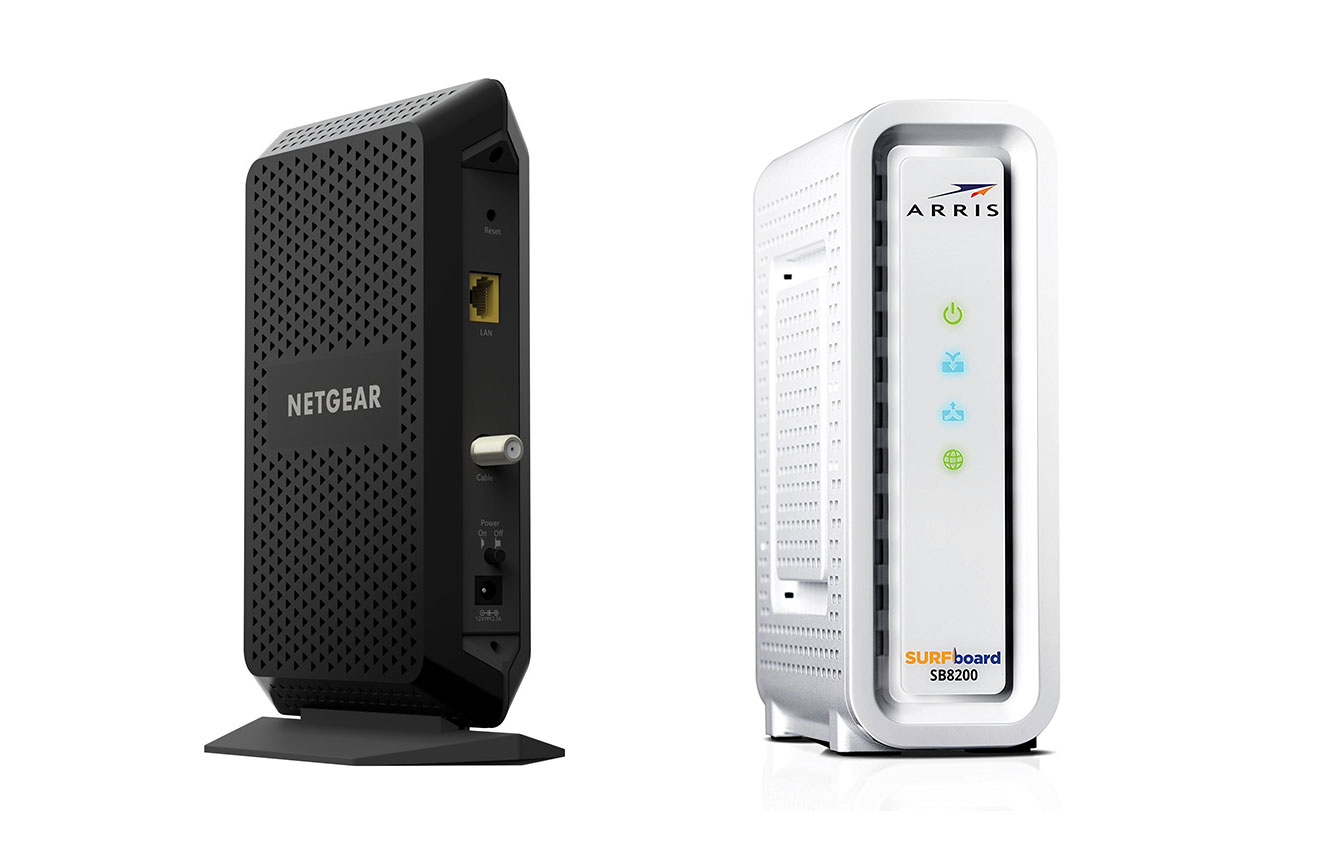What Is C-Band 5G and Why Does It Matter to You?
Getting 5G much closer to its full potential
Sep 6, 2023 | Share
Internet Speed Guides, Technology
Once used primarily by satellite TV operators, C-band is a spectrum of radio frequencies that cellular companies use to improve the performance and reach of 5G wireless networks. Long story short, it’s the stuff that gives your 5G phone a massive speed boost on a regular basis.
But what is C-band spectrum, exactly? And what makes it so special? Keep reading to learn the ins and outs of C-band and how you can get the most out of it on your phone or mobile device.
You can also use our How Much Internet Speed Do I Need? tool to see what works best for you based on your home and mobile internet needs.

Why Is C-band 5G important?
C-band is a form of radio spectrum that enables fast speeds on a wide scale for cell phones and 5G home internet.
Wireless companies use radio waves to provide internet access on your cell phone. And C-band falls in the middle of the radio spectrum used for 5G networks—specifically, it refers to the frequency bands of 3.7–3.98 GHz. It’s slower than mmWave 5G (the much-hyped 5G that can hit gigabit speeds), but it’s still fast. And it’s much easier for cellular companies to deploy it across cities and towns.
The introduction of C-band is a major step in the years-long deployment of 5G wireless networks. AT&T and Verizon have been rolling out C-band across their 5G networks since early 2022, while T-Mobile has plans to launch its own C-band too.
| 5G type | Speed capabilities | Range from cell tower | More info |
|---|---|---|---|
| mmWave (24–47 GHz) | 600 Mbps and above | Line of sight (less than half sq. mile) | View 5G Providers |
| C-band (3.7–4.2 GHz) | 100-500 Mbps | 0.5–6 sq. miles | View 5G Providers |
| Low-band (600 MHz–1 GHz) | 30-50 Mbps | Hundreds of sq. miles | View 5G Providers |
 Benefits of C-band 5G:
Benefits of C-band 5G:
- C-band can deliver fast speeds, upwards of 100 Mbps on phones.
- C-band can work over long ranges without requiring too many cell towers.
- There’s a lot of C-band spectrum available for wireless use by telecom companies.
If you’re curious about C-band 5G because you want a wireless home internet setup, then run a search with your zip code below to see what kind of home internet you can get in your area.
How can you get C-band 5G?
Verizon and AT&T are the two main cell carriers using C-band 5G right now. So if you have a cell phone plan with either, you’re golden. Of course, you also need a 5G phone with C-band capability to access any C-band networks.
C-band 5G is currently available in dozens of major cities, reaching over 60% of the U.S. population. Verizon announced that it’s now in the process of doubling and even tripling C-band 5G access in its markets, and AT&T is also boosting availability for more customers.
T-Mobile has focused on building up other versions of 5G with slightly slower speeds, and it’s been wrangling with the Federal Communications Commission (FCC) to let it unleash a portion of C-band spectrum that it bought at auction. That portion should be available in 53 more major markets beginning in December 2023, but it may not happen, according to some reports.
Where can you find C-band 5G, exactly?
Allnet Insights & Analytics put together a list of where C-band 5G is available as of January 2022. It also has listed where C-band will be made available beginning in December 2023. Take a look below to see if you can get C-band 5G in your city or town.
Markets where C-band 5G is currently available (listed in order of population size):
- New York City, NY
- Los Angeles, CA
- Chicago, IL
- San Francisco, CA
- Philadelphia, PA
- Boston, MA
- Dallas, TX
- Miami, FL
- Houston, TX
- Detroit, MI
- Orlando, FL
- Cleveland, OH
- Phoenix, AZ
- Seattle, WA
- Minneapolis–St. Paul, MN
- San Diego, CA
- Portland, OR
- Tampa, FL
- Sacramento, CA
- Pittsburgh, PA
- Saint Louis, MO
- Cincinnati, OH
- Las Vegas, NV
- Salt Lake City, UT
- San Antonio, TX
- Jacksonville, FL
- Kansas City, MO
- Indianapolis, IN
- Nashville, TN
- Virginia Beach, VA
- Fresno, CA
- Austin, TX
- New Orleans, LA
- Columbus, OH
- Milwaukee, WI
- Oklahoma City, OK
- Birmingham, AL
- Syracuse, NY
- Charlotte, NC
- Rochester, NY
- Raleigh, NC
- Little Rock, AR
- Brownsville, TX
- Harrisburg, PA
- Albany, NY
- Greenville, SC
Markets where C-band 5G will be available starting December 2023:
- Baltimore, MD–Washington, DC
- Atlanta, GA
- Denver, CO
- Louisville, KY
- Charleston, WV
- Tucson, AZ
- Buffalo, NY
- Huntsville, AL
- Kalamazoo, MI
- Richmond, VA
- Bloomington, IN
- Memphis, TN
- Manchester, NH
- Toledo, OH
- Dayton, OH
- Tulsa, OK
- South Bend, IN
- Cape Coral, FL
- Lansing, MI
- Sarasota, FL
- Grand Rapids, MI
- Springfield, MA
- Eugene, OR
- Knoxville, TN
- Tallahassee, FL
- El Paso, TX
- Chattanooga, TN
- Albuquerque, NM
- Reno, NV
- Portland, ME
- Greensboro, NC
- Hattiesburg, MS
- Omaha, NE
- Saginaw, MI
- Baton Rouge, LA
- Fort Wayne, IN
- Mobile, AL
- Charleston, SC
- Frankfort, KY
- Pensacola, FL
- Frederick, MD
- Columbia, SC
- Jackson, MS
- Colorado Springs, CO
- Decatur, IL
- Lafayette, LA
- Waco, TX
- Bluefield, WV
- Richmond, KY
- Mankato, MN
- Johnson City, TN
- Tupelo, MS
- Greenville, NC
Which cellular carriers have C-band 5G?
| Cellular carrier | Percentage of C-band | More info |
|---|---|---|
| Verizon | 60% of 5G market | View 5G Providers |
| AT&T | 40% of 5G market | View 5G Providers |
| T-Mobile | Set to deploy in December 2023 | View 5G Providers |
Verizon and AT&T are the main cellular carriers with C-band 5G right now. Verizon controls about 60% of the currently available C-band 5G spectrum, while AT&T has licenses to operate 40% of it. You can currently find C-band 5G from both providers in dozens of cities across the United States.
T-Mobile also has C-band, but it isn’t cleared to make its C-band 5G networks live until December 2023, as per government regulations. (And even that might happen, due to complications with the FCC’s authority to hand out licenses for 5G spectrum use.
Even without C-band (for now), T-Mobile remains the leader in 5G
| 5G carrier | Avg. 5G download speeds | Availability* |
|---|---|---|
| T-Mobile | 195.5Mbps | 57.9% |
| Verizon | 96.3Mbps | 9.8% |
| AT&T | 80.0Mbps | 20.7% |
Data from Opensignal’s 5G Experience Report, July 2023.
*% of time phone users access 5G networks while using a 5G device. Phones revert to 4G LTE when 5G isn’t available.
T-Mobile is the dominant force in 5G, even without C-band. According to a report from analytics firm Opensignal, T-Mobile had the fastest 5G speeds and the greatest 5G availability of the three major cellular carriers as of July 2023.
Reportedly, T-Mobile hopes to stay the lead 5G player throughout 2023 by increasing its investments, expanding its wireless reach, and bringing on more customers in mobile and with its fixed-wireless T-Mobile Home Internet service.
Which 5G phones have C-band?
You can get C-band on numerous 5G phones, including the following phones:
Phones with C-band 5G access
To make sure a phone can use C-band 5G, go to the list of tech specs on the package or the manufacturer’s website and look in the wireless section to see if it supports the frequency bands called n77 and n78.
C-band 5G codes
- N77 is the code for the frequencies 3.3–4.2GHz, making it the main frequency that we know as C-band.
- N78 also covers frequencies that fall within C-band spectrum.
Pro tip:
You can use 5G on your phone—but you can also get it as a home internet setup. Take a look at our review of Verizon 5G Home Internet to see how it works.
| Phone | Starting price | Display | Processor | Get it |
|---|---|---|---|---|
| iPhone 13 | $829.00 | 6.1" Super Retina XDR OLED; 2532 x 1170 pixels | A15 Bionic | View on Amazon |
| iPhone 12 | $600.15 | 6.1-inch Super Retina XDR display with True Tone; 2532 x 1170 pixels | A14 Bionic | View on Amazon |
| Samsung Galaxy S23 Ultra 5G | $999.99 | 6.8" AMOLED; 3200 x 1440 pixels | Snapdragon 888 | View on Amazon |
| Google Pixel 6 | $388.88 | 6.4-inch FHD+ Smooth Display; 2400 x 1080 pixels | Google Tensor | View on Amazon |
| Google Pixel 7 | $589.99 | 6.3-inch AMOLED; 2400 x 1080 pixels | Google Tensor G2 | View on Amazon |
Amazon.com Price (as of 9/6/23 10:15 MST). See full disclaimer.
Which 5G phones are NOT compatible with C-band 5G?
Any 5G phone that does not support n77 and n78 bands will not be compatible with C-band 5G. Many of the early 5G phones don’t have C-band support. Many low-end phones currently on the market don’t have C-band either. If you’re not sure whether your phone supports C-band, contact your cell carrier to double check.
Do you need a 5G phone with C-band?
You need a 5G phone to access any type of 5G service, including C-band. But you don’t necessarily need C-band on a phone right now—unless you have Verizon or AT&T and hope to get the most out of your 5G experience. While C-band isn’t fully deployed yet, availability will expand in 2022, and the right 5G phone will ensure you get the best speeds in the widest coverage area.
If you’re on T-Mobile, don’t worry about investing in a pricey phone just for the C-band. T-Mobile won’t deploy C-band until late 2023—and likely by then, a lot more 5G phones will be on the market, and most (if not all) will have C-band capability.
As you shop around for 5G phones and networks, it’s also important to see what you can get for your home internet. Run a search below to see what’s available in your area—and how it compares to 5G capabilities.
If C-band is so great, then why doesn’t everyone have it now?
European and Asian telecommunications companies have already deployed C-band in their 5G markets, but the United States is late in hopping on the C-band bandwagon.
The build-up to 5G in the late 2010s came with a lot of hype. Commentators and telecom experts bandied about a lot of buzzwords and made promises that 5G will soon pave the way for everything from gigabit phone speeds to self-driving cars to robot brain surgeries.
Alas, that bright future has not become a reality. Throughout 2020 and 2021, 5G was only intermittently available on peoples’ phones. For the most part, 5G speeds were only a nudge or two faster than 4G.
Pro tip:
Get a full run down on the differences between 4G and 5G wireless networks in case you’re unsure about speed, pricing, and availability.
5G’s lackluster performance has a lot to do with the radio spectrum that federal regulators made available for commercial use. Cellular companies need to purchase licenses from the Federal Communications Commission in order to use certain airwaves for their wireless networks, and initially, the FCC emphasized millimeter-wave channels (24–47 GHz) over C-band channels, since millimeter-wave had little commercial use and a lot of potential to deliver fast speeds.
Millimeter-wave looks fantastic on paper—it’s capable of delivering gigabit-plus speeds and significantly lower latency. But there are some big downsides to millimeter-wave, too, which put a damper on cellular companies’ abilities to roll out the fastest form of 5G quickly across the country.
 Downsides to millimeter wave 5G:
Downsides to millimeter wave 5G:
- Millimeter-wave signals have an extremely limited, “line of sight” range.
- A millimeter-wave signal can be knocked out by inclement weather or even trees and hills.
- Widespread access to millimeter-wave requires a massive buildup of infrastructure (think a radio tower on every city block).
For these reasons, 5G’s progress lagged during the initial two years of deployment, and now cellular companies are eager to deploy C-band to really get 5G going.
If you’re curious about C-band 5G because you want a wireless home internet setup, then run a search with your zip code below to see what kind of home internet you can get in your area.
Disclaimer
Product prices and availability are accurate as of the date/time indicated and are subject to change. Any price and availability information displayed on Amazon.com at the time of purchase will apply to the purchase of this product. HighSpeedInternet.com utilizes paid Amazon links.
CERTAIN CONTENT THAT APPEARS ON THIS SITE COMES FROM AMAZON. THIS CONTENT IS PROVIDED ‘AS IS’ AND IS SUBJECT TO CHANGE OR REMOVAL AT ANY TIME.
Author - Peter Holslin
Peter Holslin has more than a decade of experience working as a writer and freelance journalist. He graduated with a BA in liberal arts and journalism from New York City’s The New School University in 2008 and went on to contribute to publications like Rolling Stone, VICE, BuzzFeed, and countless others. At HighSpeedInternet.com, he focuses on covering 5G, nerding out about frequency bands and virtual RAN, and producing reviews on emerging services like 5G home internet. He also writes about internet providers and packages, hotspots, VPNs, and Wi-Fi troubleshooting.
Editor - Rebecca Lee Armstrong
Rebecca Lee Armstrong has more than six years of experience writing about tech and the internet, with a specialty in hands-on testing. She started writing tech product and service reviews while finishing her BFA in creative writing at the University of Evansville and has found her niche writing about home networking, routers, and internet access at HighSpeedInternet.com. Her work has also been featured on Top Ten Reviews, MacSources, Windows Central, Android Central, Best Company, TechnoFAQ, and iMore.







